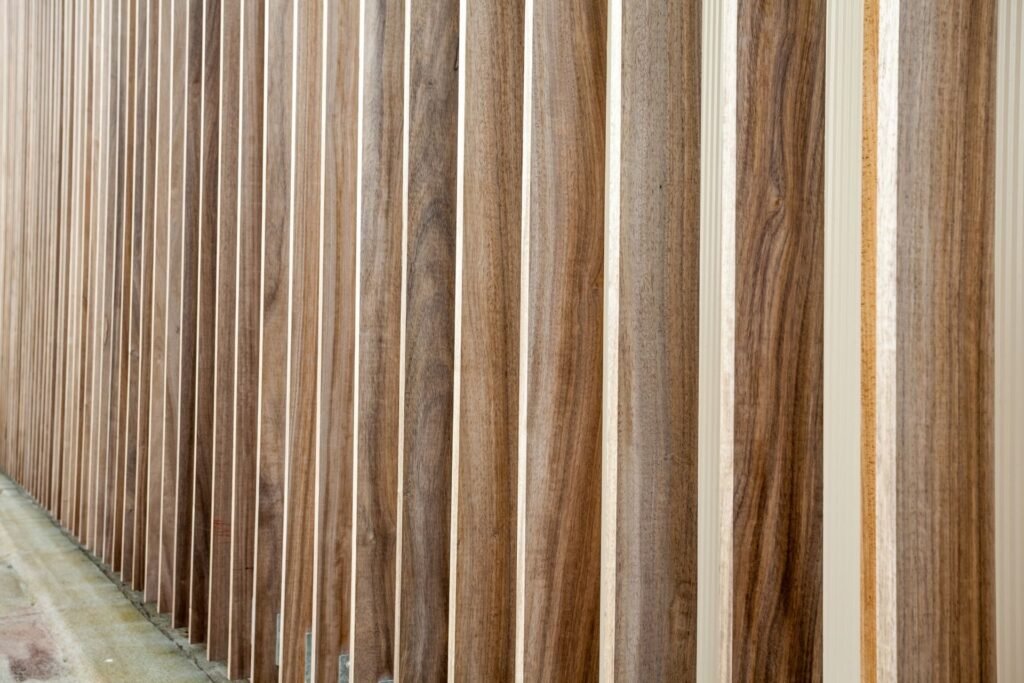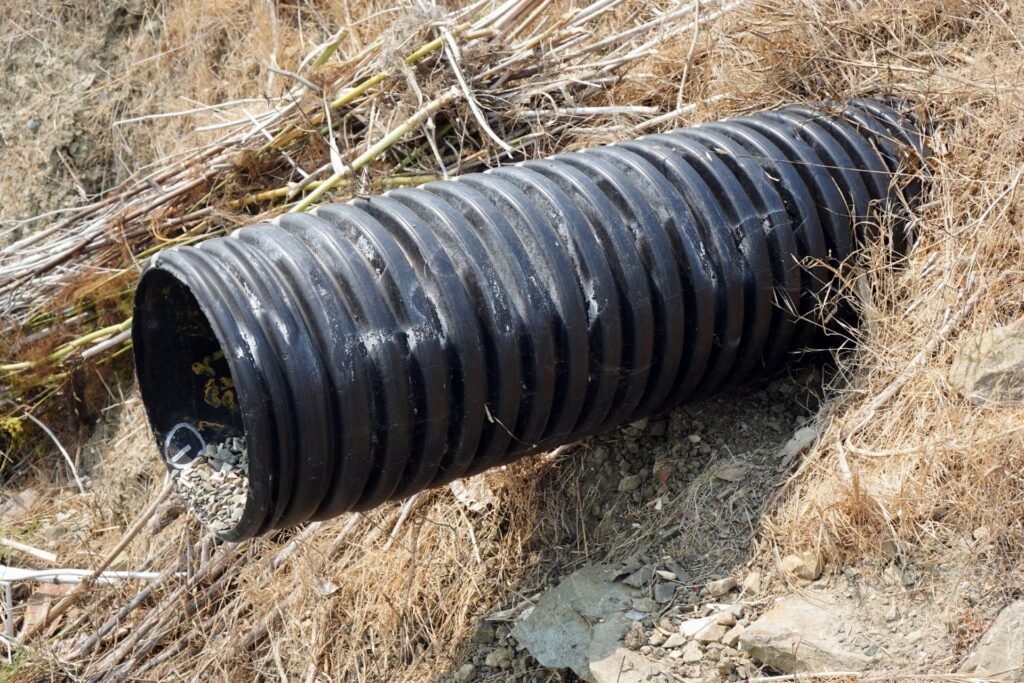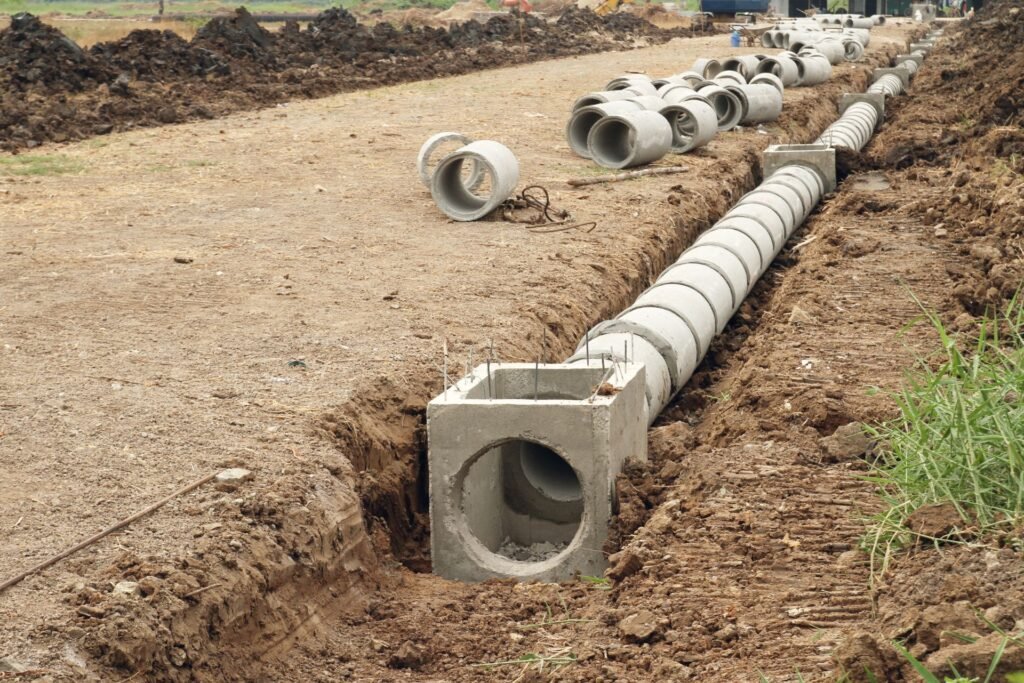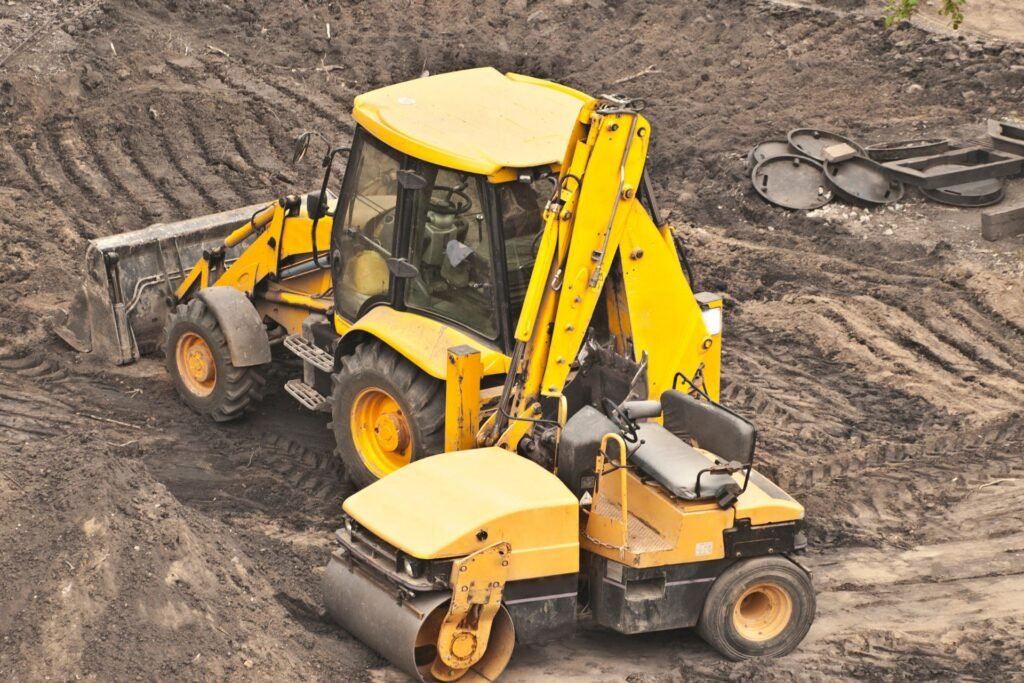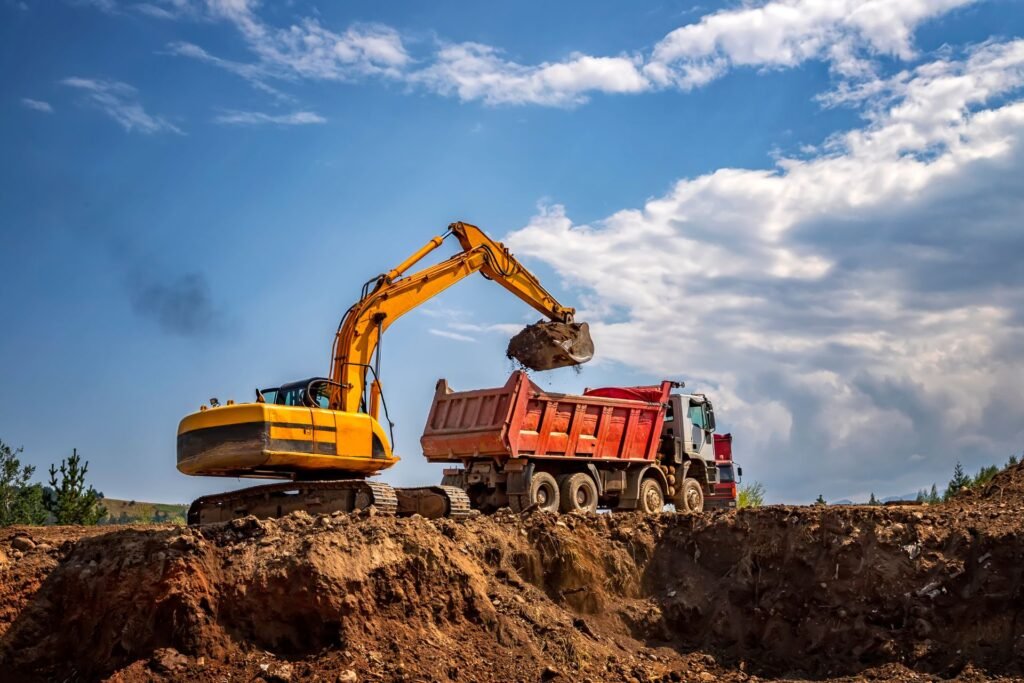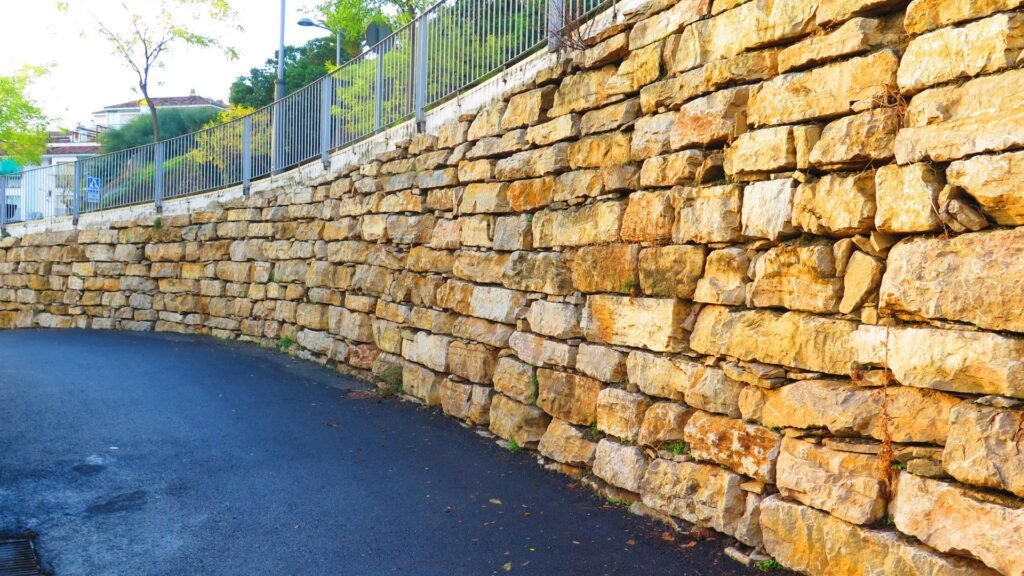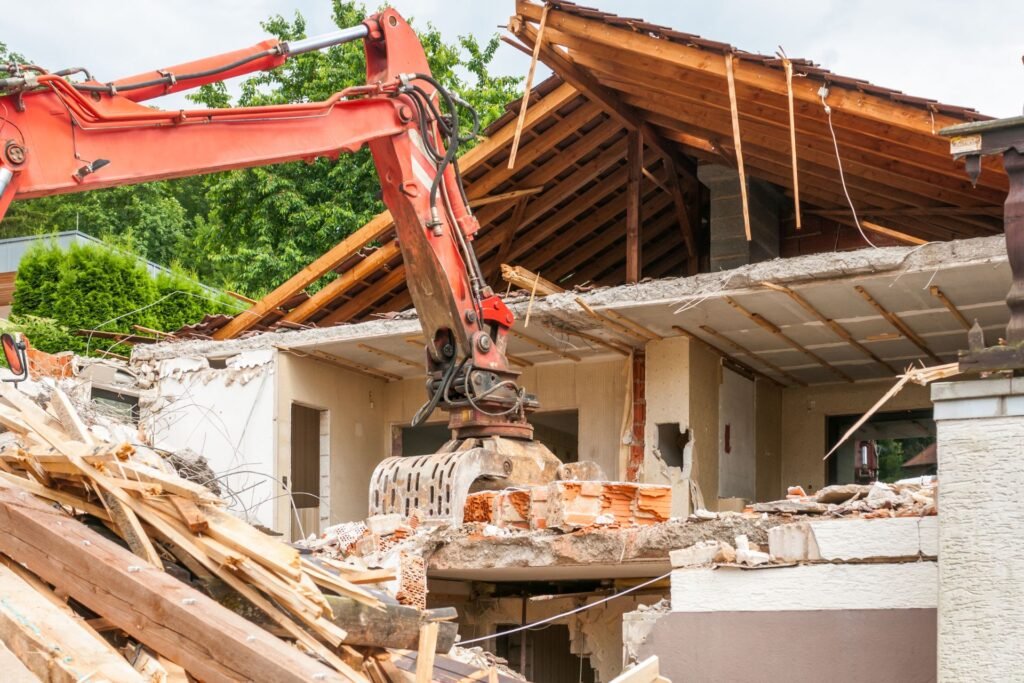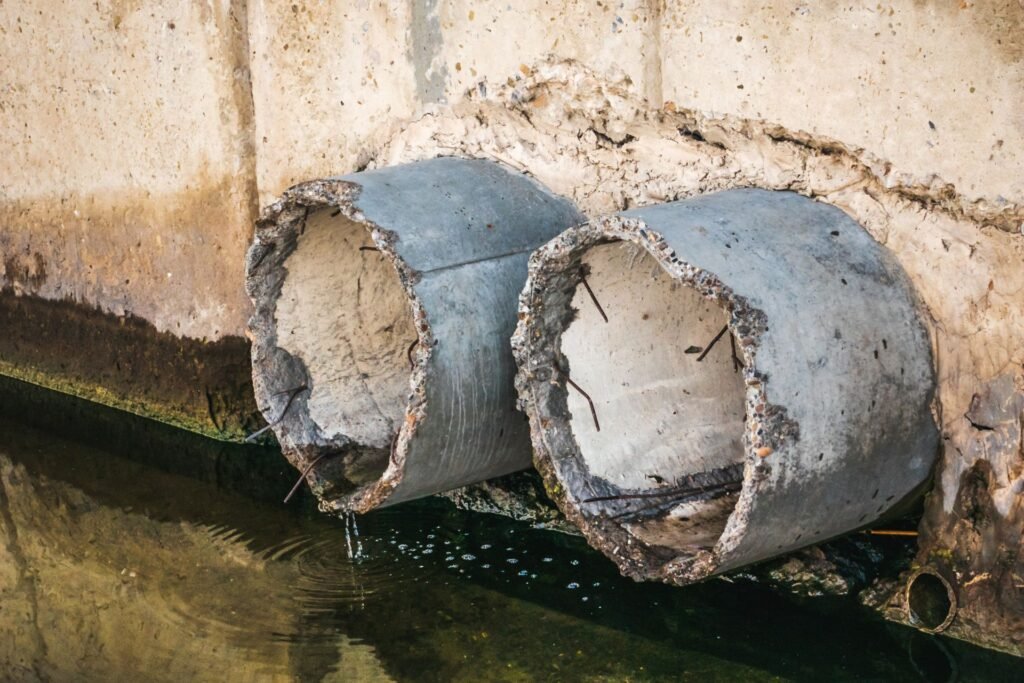Welcome to our comprehensive guide on timber retaining walls in New Zealand! If you’re looking to enhance your outdoor space with a structure that combines functionality and natural beauty, a timber retaining wall might be just what you need. In this blog post, we’ll explore everything you need to know about timber retaining walls—from their benefits and design ideas to installation tips and maintenance strategies. Whether you’re a DIY enthusiast or considering hiring a professional, we aim to provide valuable insights to help you make the best choice for your landscaping project, ensuring your outdoor space not only looks great but stands the test of time in New Zealand’s unique environment.
A timber retaining wall in New Zealand offers a cost-effective and aesthetically pleasing solution for managing soil and enhancing outdoor spaces. Made from treated pine, hardwood, or reclaimed timber, these walls provide durability and versatility in design, making them a popular choice for gardens and landscapes. Easy to install and maintain, timber retaining walls blend seamlessly with natural surroundings, offering both structural support and a beautiful backdrop for your property.
Table of Contents
Benefits Of Timber Retaining Walls
When it comes to landscaping, choosing the right material for your retaining wall is crucial. Timber retaining walls have become a popular choice in New Zealand for various reasons, offering both functional and aesthetic benefits that cater to diverse landscaping needs. Let’s explore some of the key benefits of timber retaining walls.
Natural Aesthetic Appeal
One of the most significant advantages of timber retaining walls is their natural aesthetic appeal. Timber offers a warm, earthy look that seamlessly blends with New Zealand’s unique landscapes. Unlike other materials such as concrete or stone, which can sometimes appear cold or industrial, timber provides a softer, more organic feel. This natural appearance can enhance the beauty of a garden or outdoor space, making it feel more inviting and connected to the surrounding environment. Whether your property is nestled in a lush, green valley or set against a coastal backdrop, a timber retaining wall can complement the natural surroundings, enhancing the overall visual appeal of your outdoor area.
Cost-Effectiveness
Cost is often a significant factor when considering landscaping projects, and timber retaining walls offer a cost-effective solution. Timber is generally more affordable than other materials like stone or concrete, making it an attractive option for those working within a budget. This cost advantage does not mean you have to compromise on quality or durability. With proper treatment and maintenance, timber retaining walls can last for many years, providing a long-term, economical option for property owners. Moreover, the lower material costs of timber can make it possible to allocate budget to other landscaping features, allowing for a more comprehensive and well-rounded design.
Versatility in Design
Another standout benefit of timber retaining walls is their versatility in design. Timber is a highly adaptable material, which means it can be used to create a wide range of wall designs, from simple, straight structures to more complex, curved installations. This flexibility allows homeowners and landscapers to get creative, tailoring the design of the retaining wall to fit specific needs and preferences. Whether you are looking to build a small, functional wall for a garden bed or a large, multi-tiered structure to manage sloped terrain, timber can be easily shaped and arranged to suit your vision. This adaptability makes timber a preferred choice for those looking to create a personalized, unique outdoor space.
Ease of Installation
For those who enjoy taking on DIY projects, timber retaining walls are relatively easy to install. Unlike stone or concrete walls, which can require specialized equipment and expertise, timber walls can often be constructed using basic tools and materials. This ease of installation not only reduces labor costs but also allows for quicker project completion. Even for those without much DIY experience, there are plenty of resources available, from online tutorials to guides at local hardware stores, making the process straightforward and accessible. The simplicity of working with timber means that you can achieve a professional-looking retaining wall without the need for professional help, saving both time and money.
In summary, timber retaining walls offer several compelling benefits that make them an excellent choice for many homeowners in New Zealand. Their natural aesthetic appeal, cost-effectiveness, versatility in design, and ease of installation make them a practical and attractive option for enhancing any outdoor space. Whether you are looking to add structure to your garden, manage sloped terrain, or create a striking landscape feature, timber retaining walls provide a solution that is both functional and visually appealing.
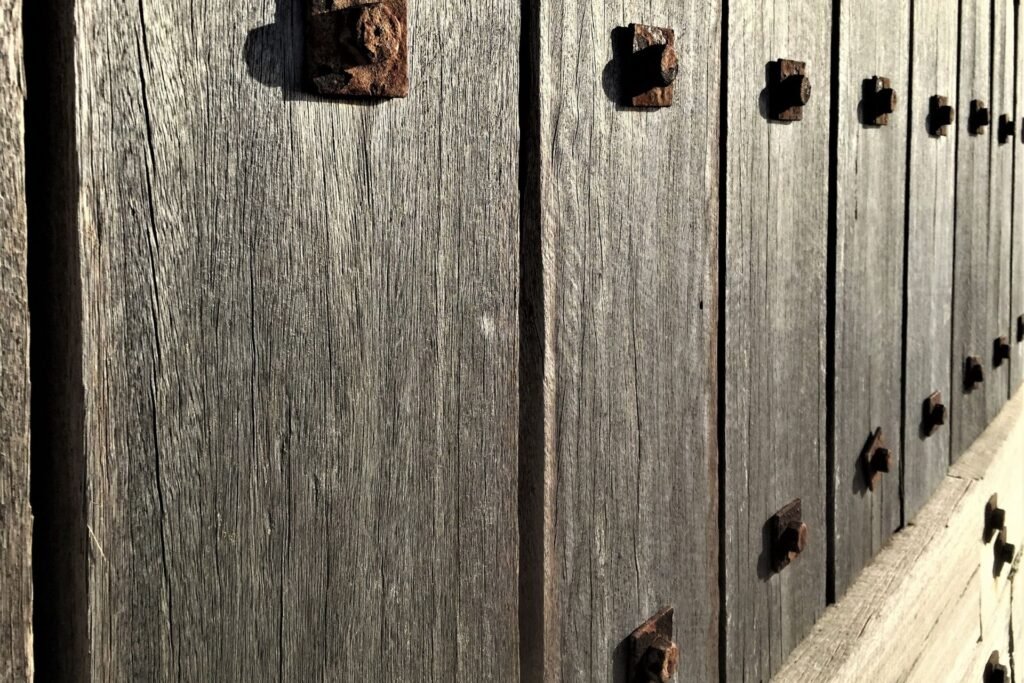
Types Of Timber Used For Retaining Walls In NZ
When it comes to building retaining walls in New Zealand, choosing the right type of timber is crucial. Different types of timber offer varying levels of durability, affordability, and aesthetic appeal. This section delves into the most commonly used types of timber for retaining walls in New Zealand: Pine, Hardwoods, and Reclaimed Timber. Each of these options has unique benefits, and understanding them will help you make an informed decision for your landscaping needs.
Pine
Pine is one of the most popular choices for retaining walls in New Zealand, and for good reasons. Treated pine, in particular, stands out for its affordability and durability. This type of timber is pressure-treated with preservatives that protect it from rot, insects, and other forms of decay, making it a long-lasting option for outdoor use.
Pine is not only cost-effective, but it is also widely available across New Zealand. The affordability factor makes it a go-to choice for homeowners and contractors looking to build retaining walls on a budget without compromising on quality. The ease with which pine can be cut, shaped, and installed also adds to its appeal, especially for DIY enthusiasts. Moreover, treated pine has a natural look that blends well with most landscapes, giving your garden or backyard a cohesive and aesthetically pleasing appearance.
Hardwoods
Hardwoods such as Macrocarpa are another excellent option for retaining walls in New Zealand. Hardwoods are renowned for their strength and longevity, making them a perfect choice for those who are looking for a robust and durable retaining wall solution. Unlike softer woods, hardwoods like Macrocarpa offer superior resistance to wear and tear, as well as natural resistance to decay and insects. This resistance means they require less maintenance over time, which can be a significant advantage for homeowners who want a low-maintenance landscaping solution.
Macrocarpa, in particular, has become a favorite due to its availability in New Zealand and its excellent performance in outdoor environments. This type of wood has a beautiful, natural grain that adds a unique visual appeal to retaining walls, enhancing the overall look of the landscape. While hardwoods may be more expensive than treated pine, their longevity and aesthetic benefits often justify the initial investment, especially for those looking for a high-quality finish that will last for decades.
Reclaimed Timber
For those who are environmentally conscious or seeking a unique aesthetic, reclaimed timber offers an eco-friendly alternative for building retaining walls. Reclaimed timber is sourced from old structures, barns, or recycled materials, which means it has a lower environmental impact than newly harvested wood. By choosing reclaimed timber, you are not only contributing to sustainability but also bringing a piece of history into your garden or outdoor space.
One of the standout benefits of using reclaimed timber is its unique appearance. Each piece of reclaimed wood carries its own story, characterized by weathered textures, distinctive grain patterns, and a rustic charm that new timber cannot replicate. This uniqueness can add a lot of character to your retaining wall, making it a focal point in your garden design. Additionally, reclaimed timber is often more durable than it appears, having already stood the test of time in its previous use. This durability, combined with its aesthetic appeal and eco-friendly credentials, makes reclaimed timber an increasingly popular choice for retaining walls in New Zealand.
In summary, whether you opt for the affordability and practicality of treated pine, the strength and beauty of hardwoods like Macrocarpa, or the eco-friendly charm of reclaimed timber, each type has its advantages. By understanding the properties and benefits of these timbers, you can choose the most suitable option for your retaining wall project in New Zealand, ensuring it meets your needs and enhances the beauty of your outdoor space.

Design Ideas For Timber Retaining Walls
Timber retaining walls are a versatile and attractive choice for landscaping. They can serve both functional and aesthetic purposes in a variety of yard settings. Below, we’ll explore several creative design ideas for timber retaining walls that can elevate the look and feel of your outdoor space. Whether you’re working with a flat yard, a steep slope, or anything in between, there’s a timber retaining wall design that can work for you.
Classic Horizontal and Vertical Slat Walls
One of the most popular timber retaining wall designs is the use of horizontal or vertical slats. These designs can be adapted to fit different yard layouts and can add a unique visual element to your outdoor area.
- Horizontal Slat Walls: These are perfect for contemporary gardens. The clean, straight lines of horizontal slats create a sense of depth and can make a small yard appear larger. They work particularly well in urban settings where a modern aesthetic is desired. Horizontal slat walls are also great for creating a sleek and uninterrupted look, which is ideal for minimalist gardens.
- Vertical Slat Walls: On the other hand, vertical slats are more traditional and can give your garden a classic, timeless feel. They are perfect for rustic or country-style gardens where you want a more natural look. Vertical slat walls can also create the illusion of height, making them a good choice for small gardens where you want to add a sense of spaciousness.
Both horizontal and vertical slat designs can be customized with different types of timber, stains, and finishes, allowing you to match your wall with the overall style of your home and garden.
Terraced Garden Walls
For sloped gardens, terracing with timber retaining walls is a fantastic way to make the most of your outdoor space. Terraced walls can help prevent soil erosion, create multiple planting areas, and add a dynamic element to your garden design.
Terracing involves building a series of stepped retaining walls that follow the natural contour of a slope. This not only helps to manage the incline but also creates a series of flat, usable spaces that can be used for planting, seating, or even small patios. The use of timber for terracing adds a warm, organic feel to the garden, blending seamlessly with the surrounding landscape.
When designing terraced timber retaining walls, it’s important to consider the height and spacing of each tier. Too high, and the walls may overpower the garden; too low, and they may not effectively hold back the soil. Working with a professional landscaper or garden designer can help you strike the perfect balance and ensure that your terraced garden is both beautiful and functional.
Incorporating Seating and Planters
One of the most creative ways to use timber retaining walls is to incorporate seating and planters directly into the design. This not only maximizes the functionality of the retaining walls but also creates a cohesive, multi-purpose outdoor space.
- Integrated Seating: By building benches into the retaining wall, you create a natural gathering spot that is perfect for outdoor entertaining. This is particularly effective in smaller gardens where space is at a premium. The benches can be topped with comfortable cushions or left bare for a more minimalist look.
- Built-in Planter Boxes: Incorporating planter boxes into the retaining wall design allows you to add greenery and color to the structure itself. This is a great way to soften the appearance of the walls and create a more lush, inviting space. Planter boxes can be placed at different heights to create a tiered effect, adding visual interest to your garden.
Combining seating and planters with your retaining wall design can turn a simple functional element into a stunning focal point that enhances the overall usability and aesthetic of your garden.
Rustic vs. Modern Looks
When it comes to the overall look of your timber retaining walls, you have the choice between a rustic, natural style or a more polished, modern aesthetic. Each has its own unique charm and can be tailored to suit your personal taste and the style of your home.
- Rustic Timber Walls: These walls feature rough-hewn timber with natural edges, knots, and grain patterns. They are perfect for creating a natural, earthy look that blends seamlessly with the surrounding landscape. Rustic timber walls are ideal for country-style gardens, woodland settings, or anywhere you want to achieve a more organic feel. They can be left untreated to weather naturally or sealed to protect the wood while maintaining its rugged appearance.
- Modern Timber Walls: For a more contemporary look, consider using smooth, planed timber with clean lines and sharp edges. Modern timber retaining walls often feature uniform planks or panels arranged in a precise pattern, creating a sleek and polished appearance. These walls are perfect for urban gardens, modern homes, or any outdoor space where a minimalist design is desired. The timber can be stained or painted in a variety of colors to match the overall color scheme of your garden and home.
Both rustic and modern timber retaining walls offer unique benefits and can dramatically enhance the look of your outdoor space. By choosing the right style, you can create a garden that is both functional and visually appealing, reflecting your personal taste and complementing the style of your home.
Timber retaining walls are a versatile and attractive option for any garden. Whether you prefer the classic look of horizontal or vertical slats, the dynamic functionality of terraced walls, the creative integration of seating and planters, or the choice between rustic and modern styles, there’s a timber retaining wall design to suit every taste and garden layout. By carefully considering your needs and the style of your outdoor space, you can create a beautiful and functional garden that enhances the natural beauty of your home.

Planning Your Timber Retaining Wall: A Comprehensive Guide
When planning a timber retaining wall, it’s crucial to approach the project with careful consideration and thorough planning. Whether you’re embarking on a DIY project or hiring a professional, understanding the key elements involved in constructing a sturdy, aesthetically pleasing, and long-lasting retaining wall will ensure the success of your endeavor. This guide will walk you through the essential steps, from assessing your site to choosing the right materials, to navigating local regulations in New Zealand.
Assessing Your Site
The first step in planning your timber retaining wall is to evaluate the characteristics of your site. Proper assessment of the soil type, slope, and drainage needs is essential for the structural integrity and durability of the wall.
- Soil Type: Different soil types have varying load-bearing capacities and drainage characteristics. Sandy soils, for instance, drain well but may not provide adequate support, while clay soils offer good support but can retain water, leading to pressure build-up against the wall. Conduct a soil test or consult with a soil engineer to determine the best approach for your specific conditions.
- Slope: The steepness of the slope will dictate the height and design of the retaining wall. A steeper slope may require a taller wall or even a tiered design to reduce pressure. It’s important to calculate the angle of the slope and consider any potential issues, such as soil erosion or landslides.
- Drainage Requirements: Proper drainage is crucial to prevent water build-up behind the retaining wall, which can lead to hydrostatic pressure and eventually cause the wall to fail. Consider installing a drainage system, such as gravel backfill and drainage pipes, to redirect water away from the structure.
By carefully assessing these factors, you can design a timber retaining wall that is not only functional but also safe and durable.
Obtaining Necessary Permits
In New Zealand, constructing a retaining wall may require specific permits and adherence to local council regulations. It’s essential to check with your local council to understand the requirements for your area. Generally, walls over a certain height—often around 1.5 meters—will require a building consent. Additionally, if the retaining wall is near a property boundary or has a significant impact on neighboring properties, further approvals may be needed.
- Research Local Regulations: Every region in New Zealand has its own set of rules and guidelines. Make sure to research these thoroughly to avoid any legal issues down the line.
- Application Process: If permits are required, prepare all necessary documents, including site plans, engineering reports, and construction details. Submit these to your local council for approval. The process can take several weeks, so plan accordingly.
Being aware of and complying with local regulations ensures your project goes smoothly and avoids any costly fines or delays.
Choosing the Right Timber
Selecting the right type of timber for your retaining wall is a critical decision that affects not only the appearance and longevity of the wall but also its environmental footprint.
- Budget Considerations: Timber comes in various grades and types, ranging from treated pine, which is cost-effective and widely available, to hardwoods like cedar and redwood, which are more durable but also more expensive. Assess your budget and choose a timber that meets both your financial and functional needs.
- Design Preferences: The aesthetic appeal of the timber retaining wall is often a key consideration. Different timbers offer unique colors, textures, and grains, allowing you to match the wall to your garden or landscape design.
- Environmental Impact: Sustainable building practices are increasingly important. Consider using timber that is sustainably sourced or certified by an environmental organization. Reclaimed or recycled wood is also a great option for reducing environmental impact.
By considering these factors, you can choose a timber that fits your project requirements and contributes to a sustainable environment.
Hiring a Professional vs. DIY
Deciding whether to hire a professional contractor or undertake the project yourself is another critical decision.
- Pros of Hiring a Professional: A professional will have the experience and expertise to handle complex projects, ensuring the retaining wall is built to code and with proper engineering practices. This can save time, reduce stress, and prevent costly mistakes.
- Cons of Hiring a Professional: On the downside, hiring a contractor can be significantly more expensive than doing it yourself. You’ll need to budget for labor costs in addition to materials and permits.
- Pros of DIY: Opting for a DIY project can be more cost-effective and provide a sense of accomplishment. It’s a great option if you have the necessary skills, tools, and time to commit to the project.
- Cons of DIY: However, DIY projects come with risks, especially if you lack experience in construction or landscaping. Mistakes can lead to safety hazards or additional expenses down the line to fix issues.
Ultimately, the choice between hiring a professional and taking the DIY route depends on your budget, skills, and confidence in handling such a project. Weigh the pros and cons carefully to make the best decision for your situation.
By following these steps and carefully planning each aspect of your timber retaining wall project, you’ll ensure a successful build that meets your needs, adheres to local regulations, and enhances the beauty of your landscape.

Step-By-Step Guide To Installing A Timber Retaining Wall
Installing a timber retaining wall in your yard can add both functionality and aesthetic appeal. Whether you’re looking to level out a slope, create a garden bed, or simply add a rustic touch to your landscape, a timber retaining wall is a fantastic choice. This guide will walk you through the entire process, from gathering materials to adding the finishing touches. Let’s dive in!
Materials and Tools Needed
Before you start building your timber retaining wall, it’s crucial to gather all the necessary materials and tools. This ensures a smooth workflow and prevents any last-minute trips to the hardware store. Here’s what you’ll need:
- Timber: Choose treated pine or hardwood, as they are resistant to rot and decay. The size of the timber will depend on the height and length of your wall.
- Nails or Screws: Galvanized nails or screws are ideal for outdoor use as they won’t rust over time.
- Gravel: Used for backfilling to provide proper drainage and to prevent water buildup behind the wall.
- Concrete: Essential for setting the posts securely in the ground.
- Drainage Pipe: Helps direct water away from the wall, preventing water damage and increasing the wall’s longevity.
- Weed Barrier Fabric: Helps prevent weeds from growing through the timber wall.
Tools Required:
- Shovel: For digging post holes and trenching.
- Level: Ensures your wall is straight and even.
- Tape Measure: To measure the length and spacing accurately.
- Hammer or Drill: Depending on whether you’re using nails or screws.
- Post Hole Digger: Makes digging post holes easier and more efficient.
- Circular Saw: For cutting timber to size.
- Wheelbarrow: To transport gravel, soil, and other materials.
Preparation
Proper preparation is key to building a strong, durable retaining wall. Start by preparing the ground and marking out the area where the wall will be installed.
1. Mark the Area: Use stakes and string lines to outline the area where the retaining wall will be built. Ensure your lines are straight and the corners are square.
2. Check for Proper Drainage: Good drainage is essential to prevent water from building up behind the wall. A retaining wall without proper drainage can lead to soil erosion and instability. Plan to install a drainage pipe and gravel behind the wall to manage water flow.
3. Dig a Trench: Dig a trench along the marked line. The trench should be deep enough to accommodate at least one-third of the height of the timber posts and wide enough to fit the width of the posts. This trench provides a stable foundation for your wall.
4. Prepare the Ground: Remove any grass, roots, and debris from the area. Level the ground using a shovel or a rake, ensuring a flat, even base for your retaining wall.
Building the Wall
Once the preparation is complete, it’s time to start building the wall. Follow these steps carefully to ensure a strong and stable structure:
1. Set the Posts: Begin by placing your first post in the trench. Make sure it’s standing upright and aligned with your marked line. Fill the hole with concrete to secure the post, and use a level to ensure it’s perfectly vertical. Repeat this process for each post, spacing them evenly according to the length of your timber boards.
2. Attach the Boards: After the posts have been set and the concrete has cured, it’s time to attach the timber boards. Starting at the bottom, fix the first board to the posts using galvanized nails or screws. Make sure the board is level. Continue adding boards until you reach the desired height, ensuring each one is level and securely fastened.
3. Backfill with Gravel: As you build, backfill the area behind the wall with gravel. This helps with drainage and prevents soil from putting too much pressure on the wall. Make sure to place a drainage pipe behind the first layer of boards to direct water away from the wall.
4. Check for Stability: As you construct the wall, regularly check for stability. Ensure the posts are secure, and the boards are firmly attached. If you notice any wobbling or instability, reinforce the wall as needed before continuing.
Finishing Touches
With the main structure in place, it’s time to add the finishing touches that will enhance the wall’s appearance and durability:
1. Add Capping: Adding a capping to the top of your retaining wall not only gives it a finished look but also provides additional protection against water damage. Cut the capping timber to size and attach it to the top of the wall using screws or nails.
2. Stain or Seal the Timber: To protect your timber retaining wall from the elements, consider staining or sealing the wood. This helps prevent rot, warping, and discoloration caused by sun and rain. Choose a stain or sealant that is suitable for outdoor use and apply it according to the manufacturer’s instructions.
3. Final Check: Once the wall is complete, do a final inspection. Make sure all boards are secure, the posts are stable, and the wall is level. Clean up any debris or excess materials around the wall area.
By following these steps, you can build a sturdy and attractive timber retaining wall that will last for years. Not only will it serve its functional purpose, but it will also enhance the aesthetic appeal of your outdoor space. Enjoy your new landscape feature and the satisfaction of a job well done!

Maintenance Tips For Timber Retaining Walls
Maintaining timber retaining walls is crucial to ensure their longevity, stability, and aesthetic appeal. Timber walls, while durable and versatile, are susceptible to natural wear and tear, weather conditions, and pest infestations. By following a regular maintenance schedule, you can keep your timber retaining wall in top condition, prolong its life, and avoid costly repairs. Here’s a comprehensive guide to help you maintain your timber retaining wall effectively.
Regular Inspection and Repairs
The foundation of good maintenance is regular inspection. Timber retaining walls should be checked periodically for any signs of rot, insect damage, or structural issues. Over time, wood can decay or become infested with pests, weakening the wall and potentially causing it to fail. Look for telltale signs such as cracks, warping, soft spots, or discolored areas. These could indicate the presence of moisture, fungal growth, or insect activity.
Pay close attention to the base of the wall, where moisture tends to accumulate, leading to a higher risk of rot and decay. It’s also wise to check for any gaps or shifts in the wall’s structure, which might suggest movement or settlement. Addressing these issues early by replacing damaged boards or reinforcing weak areas can prevent more significant problems down the line. Regular inspections can save you time and money in the long run, ensuring that your wall remains strong and functional.
Cleaning and Sealing
Cleaning is an essential part of maintaining a timber retaining wall. Over time, dirt, debris, moss, and algae can build up on the surface, leading to discoloration and potential damage. Regularly clean your timber wall using a stiff brush and mild detergent. Avoid using harsh chemicals that can strip away the wood’s natural oils or damage its surface. A pressure washer can be effective, but use it carefully to avoid damaging the timber.
After cleaning, applying a good quality sealant or wood stain is critical. Sealants protect the wood from moisture penetration, which can lead to rot and decay, while stains can enhance the wood’s natural beauty and provide additional protection against UV rays. When selecting a sealant or stain, choose products specifically designed for exterior use on timber, and apply them in dry weather conditions for the best results. Regular cleaning and sealing can significantly extend the life of your timber retaining wall and keep it looking its best year-round.
Dealing with Pests and Rot
Timber retaining walls are vulnerable to pests like termites, ants, and wood-boring beetles, as well as fungal decay and rot. To prevent pest infestations, ensure that the timber is treated with an appropriate wood preservative. This treatment can repel insects and fungi, reducing the risk of structural damage. Additionally, avoid placing soil or mulch directly against the wall, as this can provide a breeding ground for pests.
If you notice signs of pest activity, such as small holes in the wood, sawdust, or the presence of insects, take action immediately. You may need to apply an insecticide or consult a professional pest control service to eliminate the problem. For rot, it’s essential to identify the affected area and remove any decayed wood. Replace it with treated timber and consider improving drainage around the wall to reduce moisture levels, which can exacerbate rot. Proactive measures and prompt treatment can help protect your timber retaining wall from common threats.
Seasonal Care
Seasonal changes can impact the condition of your timber retaining wall, especially in areas like New Zealand, where wet conditions are common. Preparing your wall for different seasons is vital to its longevity. In the spring and summer, focus on cleaning, sealing, and inspecting for any winter damage. During the wetter months, ensure that the wall has proper drainage to prevent water from pooling and causing damage.
Consider installing a drainage system, such as weep holes or gravel backfill, to facilitate water flow away from the wall. This step can significantly reduce the likelihood of water-related damage, such as swelling, rot, or structural failure. Additionally, clear away any leaves, debris, or vegetation that could trap moisture against the wood.
By following these seasonal care tips, you can ensure that your timber retaining wall remains strong and durable throughout the year, regardless of the weather conditions. A well-maintained wall not only looks better but also performs better, providing a lasting solution for your landscaping needs.
By implementing these maintenance tips, you can keep your timber retaining wall in excellent condition, ensuring it remains a beautiful and functional part of your outdoor space for many years. Regular attention to inspection, cleaning, sealing, pest control, and seasonal care will go a long way in preserving the integrity and appearance of your wall, making it a reliable feature in your landscape.

Environmental Considerations And Sustainability
When planning a construction or landscaping project, it’s essential to consider not just the immediate costs and benefits, but also the long-term environmental impact. This section dives into the critical aspect of sustainability, focusing on how to make more eco-friendly choices regarding timber usage. Let’s explore some key considerations for those who want to build responsibly and reduce their environmental footprint.
Choosing Sustainable Timber
Selecting sustainable timber is one of the most effective ways to ensure your project is environmentally friendly. One of the most reliable options is using FSC-certified wood. FSC, or the Forest Stewardship Council, is an international organization that promotes responsible forest management. Timber with an FSC certification comes from forests that are managed to high environmental and social standards. This means the wood is harvested in a way that maintains the forest’s biodiversity, productivity, and ecological processes.
The benefits of choosing sustainable timber extend beyond just environmental impact. By opting for FSC-certified wood or similar sustainable options, you also support ethical forestry practices that respect the rights of workers and indigenous communities. Moreover, sustainably sourced wood often comes from forests that are replenished through careful planning and replanting, ensuring that the forest can continue to thrive for future generations. By choosing sustainable timber, you not only reduce your project’s carbon footprint but also contribute to a more balanced ecosystem.
Recycling and Reusing Timber
Another significant way to promote sustainability in your project is through recycling and reusing timber. Instead of sourcing all-new materials, consider how you might repurpose timber from existing structures. For example, if you are replacing an old retaining wall, you could salvage the wood and give it new life in your current project. This approach not only saves money but also reduces the demand for new timber, conserving forests and minimizing deforestation.
Repurposed timber can add a unique, rustic charm to your project that new materials simply can’t replicate. Old timber often has a character, with weathered textures and colors that can enhance the aesthetic appeal of your construction. Additionally, using recycled wood helps keep usable materials out of landfills, reducing waste and promoting a circular economy where materials are reused and repurposed rather than discarded.
There are countless creative ways to reuse timber in your projects. From constructing garden planters, raised beds, and outdoor furniture to creating decorative features or even flooring, the possibilities are nearly endless. With a bit of creativity and a commitment to sustainability, you can find ways to make the most out of the materials you already have.
Minimizing Environmental Impact
When embarking on a new project, minimizing environmental impact should be a top priority. Start by planning carefully to avoid over-ordering materials and reduce waste. Consider using local suppliers to decrease the carbon footprint associated with transportation. Additionally, think about the life cycle of the materials you’re using. Opt for durable materials that will stand the test of time, reducing the need for future replacements and repairs.
Furthermore, look for ways to implement eco-friendly practices throughout the construction process. This might include recycling scrap materials, using energy-efficient tools and machinery, and ensuring proper disposal of any waste. You can also consider using low-VOC (volatile organic compounds) paints and finishes, which are less harmful to the environment and improve air quality.
Finally, consider the broader ecological impact of your project. For instance, if your construction involves altering the landscape, think about how this might affect local wildlife and plant life. Aim to create a design that harmonizes with the natural surroundings, preserving natural habitats and promoting biodiversity.
By taking these steps, you can ensure your project is not only functional and beautiful but also a positive contribution to the environment. Sustainability isn’t just a trend; it’s a necessity for the future. By choosing sustainable timber, reusing materials, and minimizing environmental impact, you can help build a better world, one project at a time.

Cost Breakdown And Budgeting Tips
Building a timber wall can be a fantastic way to enhance your property’s aesthetic appeal and functionality, but understanding the costs involved is crucial to ensure your project stays within budget. In this section, we will break down the different costs you might incur, including the cost of materials, labor costs, potential savings if you opt for a DIY approach, and practical budgeting tips to help you save money without sacrificing quality. Let’s dive in.
Cost of Materials
When it comes to building a timber wall, the cost of materials can vary widely depending on the type of timber and other materials you choose. Here is a breakdown of the average costs you can expect:
- Hardwood: Hardwood is known for its durability and long lifespan, making it a popular choice for many. However, it comes at a premium price. On average, hardwood can cost between $10 to $15 per square foot, depending on the type and quality of the wood.
- Softwood: Softwood is generally less expensive than hardwood and is easier to work with, which can reduce labor costs if you are hiring a professional. The average cost for softwood ranges from $3 to $7 per square foot. While it may not last as long as hardwood, softwood can still be a good choice for those on a budget.
- Composite Materials: Composite materials, such as engineered wood or fiber cement, are becoming increasingly popular due to their low maintenance requirements and resistance to weather and pests. The cost of composite materials varies but typically ranges from $8 to $12 per square foot.
In addition to timber, you may need other materials such as nails, screws, concrete, sealants, and finishes. The cost of these materials can add up, so it is essential to include them in your budget. On average, you should allocate an additional 10-15% of your total material costs for these items.
Labor Costs
If you decide to hire a professional to build your timber wall, labor costs will be a significant part of your budget. Labor costs can vary depending on your location, the complexity of the project, and the contractor’s experience. Here is what you can generally expect:
- Basic Installation: For a straightforward timber wall installation, labor costs can range from $40 to $60 per hour. For a small wall, you might expect the total labor cost to be around $500 to $1,500, depending on the time it takes to complete the project.
- Complex Installations: If your timber wall design is more complex, such as incorporating curves, custom finishes, or built-in features, labor costs can increase significantly. For more intricate designs, you could be looking at $70 to $100 per hour, with total costs ranging from $2,000 to $5,000 or more.
It’s always a good idea to get multiple quotes from contractors to ensure you get the best price and to check references to ensure quality workmanship.
DIY Savings
Opting to build the timber wall yourself can lead to significant savings, particularly on labor costs. Here’s how you can save by going the DIY route:
- Material-Only Costs: If you decide to handle the project yourself, your main expense will be the materials. Based on the material costs discussed earlier, you can expect to spend anywhere from $300 to $1,500 for a small to medium-sized timber wall, depending on the type of timber you choose.
- Tool Rental or Purchase: While you might already have some basic tools, specific woodworking tools might be necessary. Renting tools can be a cost-effective option if you do not plan to use them frequently. Tool rental costs can range from $50 to $200, depending on what you need.
By opting for a DIY approach, you could potentially save 50% or more compared to hiring a professional. However, it’s essential to consider your skill level and the time investment required. Mistakes made during a DIY project can lead to additional costs if you need to redo work or hire a professional to fix errors.
Budget-Friendly Tips
Staying within budget while building a high-quality timber wall is possible with some careful planning and smart decision-making. Here are some budget-friendly tips to help you save money:
- Choose Reclaimed or Salvaged Wood: Using reclaimed or salvaged wood can significantly reduce material costs. Not only is reclaimed wood often cheaper, but it also adds a unique, rustic character to your wall. Check local salvage yards or online marketplaces for deals.
- Opt for a Simple Design: Complex designs require more materials and labor, driving up costs. By opting for a simple, straightforward design, you can save on both materials and labor costs.
- Purchase in Bulk: If your project is large or if you have multiple projects in mind, purchasing materials in bulk can save money. Many suppliers offer discounts for bulk purchases.
- Do Some of the Work Yourself: Even if you are not comfortable building the entire wall, consider doing some of the preparatory work yourself, such as clearing the site or painting the finished wall. This can reduce the amount of time a contractor needs to spend on the project, lowering your labor costs.
- Plan for Off-Season Work: Contractors are often less busy during the off-season, such as late fall or winter. Scheduling your project during these times can sometimes lead to discounts on labor costs.
By carefully planning your timber wall project, understanding the costs involved, and following these budgeting tips, you can create a beautiful, durable structure without breaking the bank. Remember, the key to a successful project is balancing cost, quality, and your personal preferences to achieve the best result.
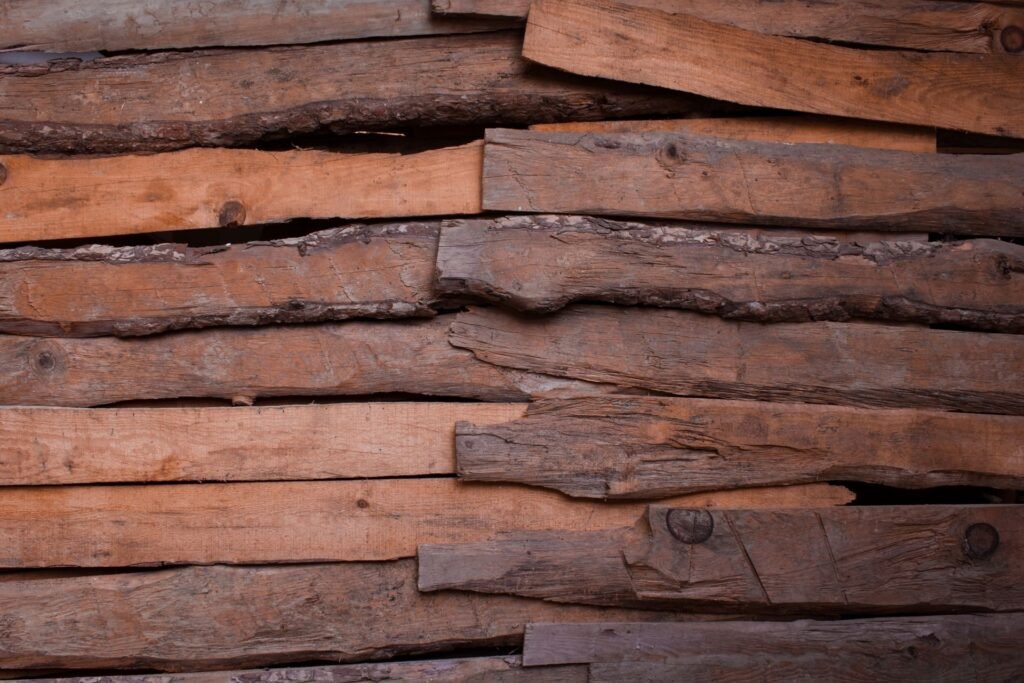
Real-Life Examples And Inspiration From NZ Homes
When considering timber retaining walls for your outdoor space, it’s helpful to look at real-life examples and draw inspiration from successful projects in New Zealand homes. Timber retaining walls are not only practical solutions for managing sloped or uneven terrain, but they also add a rustic and natural aesthetic to your garden or yard. Let’s explore some captivating stories and examples of timber retaining wall projects that have transformed outdoor spaces across New Zealand, showcasing the versatility and beauty of timber in various settings.
A Classic Country-Style Garden in Canterbury
In the rolling hills of Canterbury, a family home features a classic country-style garden with a beautifully crafted timber retaining wall. This wall was designed to create multiple tiers in the garden, providing flat areas for planting and a cozy seating nook overlooking the valley. The homeowners opted for locally sourced timber, which not only complements the natural landscape but also offers durability against the region’s weather conditions. The retaining wall doubles as a bench, perfect for enjoying a morning coffee while taking in the serene surroundings.
Modern Minimalism in Wellington
A contemporary home in Wellington embraced a minimalist approach with its timber retaining wall. Designed to blend seamlessly with the modern architecture of the home, the wall uses sleek, horizontal timber slats that give a clean, uniform look. This design provides a stunning contrast against the lush greenery of the garden, creating a visually striking effect. The timber used is treated to withstand the coastal climate, ensuring longevity and minimal maintenance. This project illustrates how a simple yet elegant design can elevate the overall look of a property, adding both aesthetic appeal and functional space.
Coastal Retreat in the Bay of Plenty
Nestled in the Bay of Plenty, a coastal retreat makes the most of its ocean views with a series of terraced timber retaining walls. These walls are designed to enhance the natural slope of the property, creating a tiered effect that allows for uninterrupted sightlines to the sea. Using a mix of different timber tones, the walls provide a natural transition from the manicured lawn to the rugged coastline. The design also incorporates integrated lighting, adding a warm glow in the evenings and highlighting the texture of the timber. This project demonstrates how thoughtful design can blend functionality with natural beauty, creating a space that is both inviting and breathtaking.
Urban Oasis in Auckland
In the heart of Auckland, an urban backyard has been transformed into a tranquil oasis with the help of timber retaining walls. The homeowners wanted to create a private retreat in their small city garden, and the timber walls serve as both a boundary and a backdrop for lush plantings. The warm tones of the timber add a natural touch to the urban setting, softening the hard lines of surrounding concrete and brick structures. Climbing plants have been encouraged to grow along the walls, further integrating the structure into the garden. This project highlights how timber retaining walls can be used to create intimate, secluded spaces even in densely populated urban areas.
Family-Friendly Space in Hamilton
A family home in Hamilton needed a practical solution for their sloped backyard to create a safe play area for their children. The solution was a series of stepped timber retaining walls that not only leveled out the space but also provided seating and storage. Built from treated pine, these walls are sturdy and safe, making them ideal for a family environment. The design also includes built-in planter boxes, which the family uses to grow vegetables and herbs, adding an educational and sustainable element to their garden. This example shows how timber retaining walls can be a multifunctional addition to a family home, enhancing both usability and aesthetic appeal.
Inspiring Designs and Layouts to Consider
The examples above demonstrate the diverse possibilities when it comes to designing timber retaining walls for your home. Whether you prefer a rustic, natural look or a sleek, modern design, timber offers a versatile material that can be adapted to suit any style. Here are some design ideas to inspire your next project:
- Terraced Gardens: Create multiple levels in your garden with timber retaining walls to add depth and dimension. This design is perfect for creating distinct areas for different plants or activities.
- Seating and Storage: Incorporate benches or storage units into your retaining wall design. This not only maximizes space but also adds functionality to your garden.
- Mixed Materials: Combine timber with other materials like stone or metal to create a unique, textured look. This approach can add visual interest and make your retaining wall stand out.
- Integrated Lighting: Adding lighting to your retaining wall can enhance the ambiance of your outdoor space. Use LED strips or spotlights to highlight the natural beauty of the timber and create a warm, inviting atmosphere.
Enhancing Landscape and Property Value
Investing in a well-designed timber retaining wall can significantly enhance your landscape and increase the value of your property. These walls not only serve practical purposes, such as soil retention and preventing erosion, but they also contribute to the overall aesthetic appeal of your home. By choosing the right design and materials, you can create a stunning outdoor space that complements your home’s architecture and meets your lifestyle needs. Whether you’re looking to create a serene garden retreat, a modern minimalist landscape, or a family-friendly backyard, timber retaining walls offer a versatile and attractive solution that can transform any outdoor area into a beautiful and functional space.
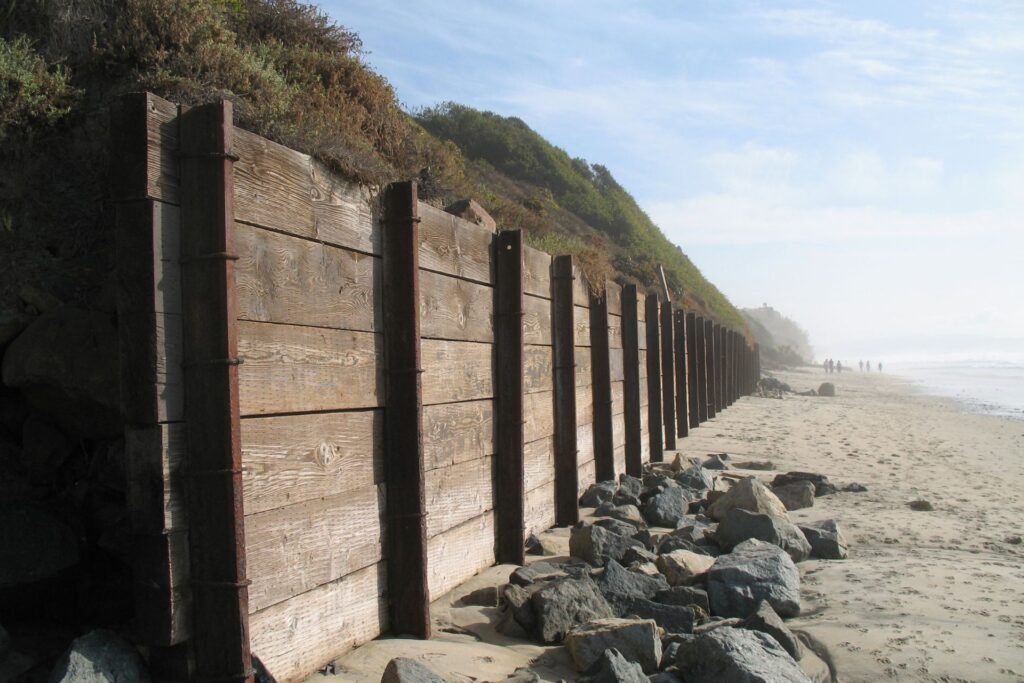
FAQs: About Timber Retaining Walls NZ
What is a timber retaining wall?
A timber retaining wall is a structure made from wooden materials, such as treated pine or hardwood, designed to hold back soil and prevent erosion. These walls are often used in landscaping to create level areas in sloped yards, provide support for garden beds, or add aesthetic appeal to outdoor spaces.
Why are timber retaining walls popular in New Zealand?
Timber retaining walls are popular in New Zealand due to their natural appearance, affordability, and ease of installation. They blend well with the country’s diverse landscapes and can be customized to suit various design preferences, from rustic to modern styles.
What types of timber are best for retaining walls in NZ?
The most common types of timber used for retaining walls in New Zealand are treated pine, which is affordable and widely available, and hardwoods like macrocarpa, known for their durability and resistance to decay. Reclaimed timber is also a popular choice for an eco-friendly option that adds a unique character to the design.
How long do timber retaining walls last?
The lifespan of a timber retaining wall depends on the type of wood used, how well it is maintained, and the environmental conditions. Treated pine walls typically last between 15 to 20 years, while hardwoods can last up to 30 years or more with proper care and maintenance.
Can I build a timber retaining wall myself, or should I hire a professional?
Building a timber retaining wall can be a manageable DIY project for those with basic carpentry skills and the right tools. However, for larger walls or complex designs, or if the wall is retaining significant loads, it’s advisable to hire a professional to ensure proper construction and safety.
What maintenance is required for timber retaining walls?
Regular maintenance for timber retaining walls includes inspecting for signs of rot, insect damage, and structural issues. It’s also important to clean the timber and apply sealants or stains to protect against moisture and UV damage. Proper drainage around the wall is crucial to prevent water accumulation, which can cause the wood to deteriorate faster.
Do I need a permit to build a timber retaining wall in New Zealand?
Permit requirements for building a timber retaining wall in New Zealand vary depending on the local council regulations and the wall’s height and location. Generally, walls over 1.5 meters high or those that support a structure or driveway may require a building consent. It’s best to check with your local council before starting your project.
How much does it cost to build a timber retaining wall in NZ?
The cost of building a timber retaining wall in New Zealand varies based on the type of wood used, the size of the wall, and whether you hire a professional. On average, costs can range from $150 to $400 per meter, including materials and labor. DIY projects may reduce labor costs, but it’s important to factor in the cost of tools and equipment.
Can timber retaining walls be used on sloped land?
Yes, timber retaining walls are ideal for sloped land. They can create terraced levels that make the land more usable and aesthetically pleasing. By holding back soil, they help to prevent erosion and provide a stable foundation for planting or other landscaping elements.
How can I make my timber retaining wall more sustainable?
To make your timber retaining wall more sustainable, consider using FSC-certified timber, which ensures the wood is sourced from responsibly managed forests. Using reclaimed or recycled timber is another eco-friendly option that reduces waste and adds character to the design. Additionally, proper maintenance can extend the life of the wall, reducing the need for replacement materials.
Conclusion
In conclusion, this blog post has explored the numerous benefits of choosing timber retaining walls for your landscaping projects. We’ve highlighted their versatility, natural aesthetic appeal, and ability to seamlessly blend with various garden styles. Timber retaining walls offer a practical solution for controlling soil erosion and managing uneven terrain while adding a touch of rustic charm to any outdoor space. Whether you’re looking to create terraced gardens, define different zones in your yard, or simply enhance the visual appeal of your property, timber retaining walls present a cost-effective and durable option. We encourage you to consider this eco-friendly choice for your next landscaping project. If you have any experiences with timber retaining walls or questions about how to incorporate them into your design, we invite you to share your thoughts in the comments below!
About the Author:
Mike Veail is a recognized digital marketing expert with over 6 years of experience in helping tradespeople and small businesses thrive online. A former quantity surveyor, Mike combines deep industry knowledge with hands-on expertise in SEO and Google Ads. His marketing strategies are tailored to the specific needs of the trades sector, helping businesses increase visibility and generate more leads through proven, ethical methods.
Mike has successfully partnered with numerous companies, establishing a track record of delivering measurable results. His work has been featured across various platforms that showcase his expertise in lead generation and online marketing for the trades sector.
Learn more about Mike's experience and services at https://theleadguy.online or follow him on social media:

